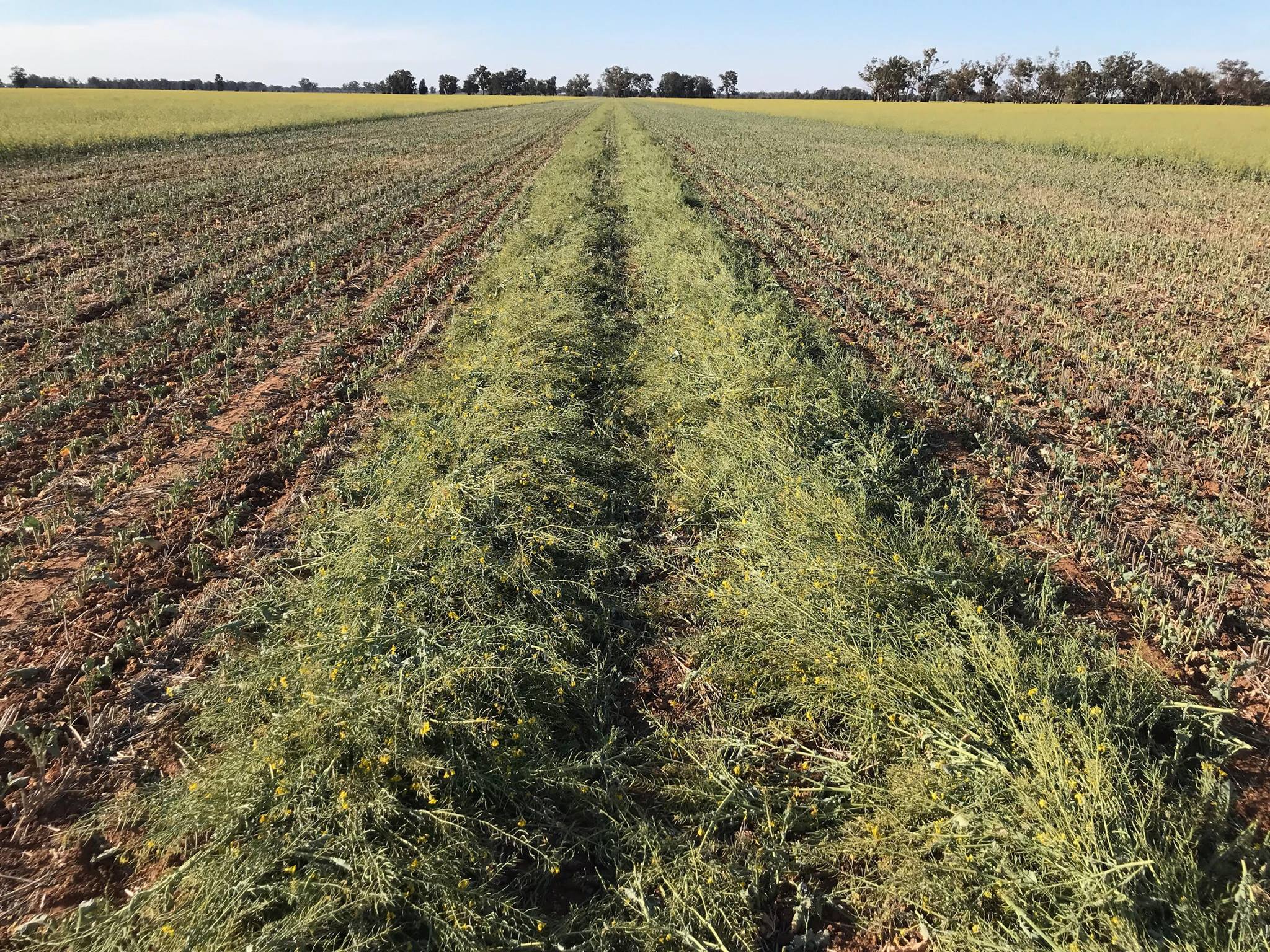Canola and hay silage
October 2018
Fiona Leech Senior Agriculture Advisor, Yass

Adverse seasonal conditions this year combined with elevated fodder prices has resulted in decisions to cut failing canola crops further west for either silage or hay.
Canola hay and silage can be a very good quality product if cut by late flowering and at a height that minimises the inclusion of hard woody stem.
Feed test results for canola hay and silage made in previous drought years (1994, 1997, 2002, 2006) has shown that whilst there is a range in quality, failed canola crops can be high in both energy and protein and a useful feed source for livestock during extended dry times.
Canola hay and silage is a suitable feed source for all ruminant livestock. Health problems associated with the feeding of canola fodder are uncommon and usually only appear when hungry stock have been given unlimited access to canola hay or silage. It is always good practice to introduce stock onto the feed slowly by using another supplementary feed such as cereal/pasture hay or grain to dilute the canola during the adjustment phase. It is also critical to ensure stock have at least partial gut fill when they are first put onto the canola supplement. They must not be hungry when first introduced. In relation to silage always ensure complete fermentation has occurred before feeding to stock to prevent potential nitrate poisoning.
Silage will generally result in higher quality fodder compared to hay for most crops however past experience has shown the feed quality of canola hay and silage is generally adequate in maintenance rations for cattle and sheep in drought years. Remember a feed test identifying the digestibility, metabolisable energy and crude protein content will always be the best guide to determine the suitability of the fodder for the livestock concerned.
Before purchasing or using canola hay or silage it is important to check the withholding period for any pesticides that have been applied to the crop while still growing. This is a very important issue particularly as livestock are more likely to be sold earlier than usual during drought.
Feed sampling kits for NSW DPI Feed Testing Service, Wagga Wagga are available from Local Land Service offices across the South East region.
For further information on Canola Hay and Silage please refer to the GRDC – Canola Hay & Silage Fact Sheet.
Material presented has drawn upon information in the GRDC Canola Hay and Silage Fact Sheet as well as a fact sheet titled, ‘Managing Failed Canola Crops, written during the 2006 drought by Paul Parker, former NSW DPI District Agronomist, Young.